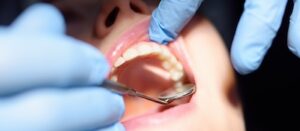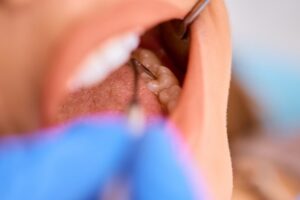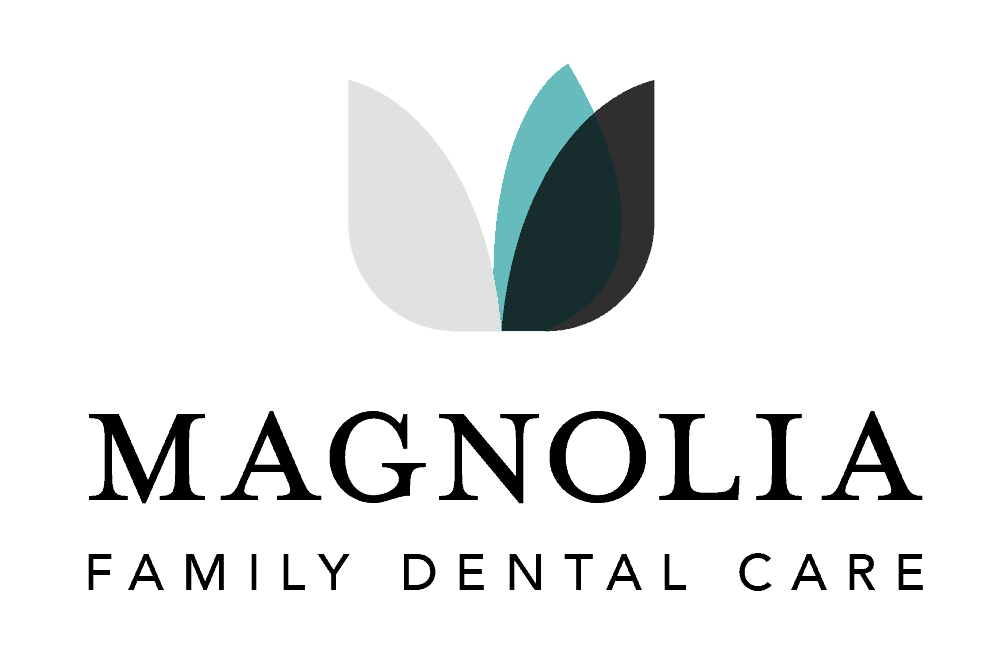
25 Mar Quick Emergency Gum Infection Treatment
Dealing with mouth pain is never pleasant, particularly when it develops into a gum infection, also known as gum disease or periodontitis. This problem often starts quietly but can lead to more serious issues if left untreated. So, how do you know if you have a gum infection? Let’s break down the common signs so you can identify it early and seek treatment.
Red, Swollen Gums
If your gums suddenly look red and feel tender to the touch, pay attention. Red and swollen gums are often the first signs of a gum infection. Healthy gums are pale pink and firm, so any deviation from this might indicate a problem.
Bleeding While Brushing or Flossing
While many might dismiss bleeding gums as normal, especially after vigorous flossing, it’s a common sign of early gum infection, also called gingivitis. If your gums bleed regularly when you brush or floss, it’s time to take notice.
Persistent Bad Breath
No matter how much you brush, floss, or rinse, does a bad taste or foul smell linger in your mouth? This can be more than just a sign of needing to improve your oral hygiene. Persistent bad breath is often associated with the presence of bacteria under the gum line, contributing to an infection.
Gum Recession
Pay attention if your teeth are suddenly looking longer or your gums are pulling away from your teeth. Gum recession can be a sign of progressing gum disease. As the infection damages the soft tissue, your gums start to recede, exposing more of your tooth and its root.
Loose or Shifting Teeth
When gum infection goes unchecked, it can undermine the foundations of your teeth. If your teeth start to feel loose or you notice a shift in your bite, it’s a sign that the infection has progressed, affecting the supporting bone structures.
Tooth Sensitivity
Have your teeth become suddenly sensitive to hot, cold, or sweet things? When gums recede due to infection, they expose parts of your tooth that aren’t protected by enamel. These exposed areas can make eating or drinking uncomfortable.
Abscesses or Pus
If you see pus between your teeth and gums or experience a new, pimple-like bump on your gums, it’s likely an abscess. Abscesses are trapped pockets of infection and require prompt attention.
Recognizing these signs early can be the difference between simple treatment and extensive dental work. Neglecting the health of your gums can lead to discomfort and potentially more serious health problems. If you spot one or more of these signs, contact your dentist for an evaluation. Taking action early can help maintain your oral health.

Immediate DIY Care for Gum Infection
When gum problems arise, knowing what to do can be helpful. Immediate care can help manage the situation before seeing a dentist. Here’s a guide for addressing a gum infection at home.
-
-
- Rinse with Saltwater
Mix 1 teaspoon of salt with a cup of warm water and swish around your mouth for 30 seconds. Repeat 2-3 times a day. Saltwater helps remove bacteria and soothes your gums. - Use Diluted Hydrogen Peroxide
Ensure it’s diluted – equal parts water and 3% hydrogen peroxide. Swish around, but don’t swallow. Use twice a day to help reduce infection, pain, and inflammation. - Apply Turmeric Paste
Mix turmeric powder with water to make a paste. Apply gently on the gums, leave for a few minutes, and then rinse. Turmeric helps fight inflammation. - Use Tea Bags
Steep a tea bag (black or green) as if making tea, but let it cool before placing it on the troubled gum area for about 5 minutes. Tea contains tannins that help reduce gum inflammation. - Apply Aloe Vera Gel
Aloe vera gel can be applied directly to the gums or used as a mouthwash when diluted with water. It soothes and fights bacteria. - Use Clove Oil
Apply a drop or two on a cotton ball and press against the gum area. Clove oil reduces pain and fights germs, protecting your gums.
- Rinse with Saltwater
-
Home Care vs. Dentist Visit for Gum Infection
These remedies are great for managing symptoms and starting treatment for a gum infection. However, they’re not permanent solutions. If your gum problems persist for more than a week, it’s time to see a dentist, especially if you have ongoing pain, swelling, or bleeding.
Caring for your gums is important. Along with these home remedies, maintain a good oral hygiene routine – brushing, flossing, and rinsing. Don’t neglect professional care when needed. Healthy gums are essential for a healthy mouth.

When to Seek Emergency Dental Care for Gum Infection
When your home remedies and daily brushing aren’t improving your gum infection, it may be time to visit an emergency dentist. Here’s how you can tell when it’s necessary.
If you experience severe pain in your gums that doesn’t go away with over-the-counter pain relievers, it’s a clear signal something is wrong. When the pain becomes very difficult to manage, it likely needs professional treatment.
Consider whether your gum infection symptoms have worsened quickly. If your gums were fine yesterday but are now significantly swollen and painful, this rapid progression can indicate a spreading infection that an emergency dentist needs to address to prevent more serious health issues.
Extreme sensitivity to hot or cold that’s new or suddenly worsening is another important clue. If even lukewarm foods become painful, or if breathing in cold air sends a shockwave of pain through your gums and teeth, it’s time to get help.
Fever and general malaise associated with a gum infection are also warning signs. When a local issue triggers system-wide symptoms, it suggests your body is fighting a significant battle against infection. This fight needs backup in the form of an emergency dental visit.
A foul taste in your mouth that won’t go away, no matter how much you brush, floss, or rinse, signals an ongoing infection that either isn’t healing or is getting worse. Often accompanied by constant bad breath that doesn’t improve with oral hygiene, this sign should prompt you to seek emergency dental care.4
Difficulty biting or chewing can indicate significant issues with your gums or teeth’s structural integrity that need prompt attention. Whether it’s because of pain, loose teeth, or some unidentifiable reason, trouble with everyday tasks like eating is a definite sign you need to see an emergency dentist.

Find Relief from Gum Infection Today!
If you notice any of these symptoms, don’t wait. Contact an emergency dentist promptly to get the care you need. The goal is not just to stop the pain but to address the underlying issues causing your gum infection before they lead to more severe problems. An emergency dentist can evaluate your symptoms, diagnose the problem accurately, and develop a treatment plan to get your oral health back on track.
Identifying Gum Infection Symptoms
Dealing with mouth pain is never pleasant, particularly when it develops into a gum infection, also known as gum disease or periodontitis. This problem often starts quietly but can lead to more serious issues if left untreated. So, how do you know if you have a gum infection? Let’s break down the common signs so you can identify it early and seek treatment.
Red, Swollen Gums
If your gums suddenly look red and feel tender to the touch, pay attention. Red and swollen gums are often the first signs of a gum infection. Healthy gums are pale pink and firm, so any deviation from this might indicate a problem.
Bleeding While Brushing or Flossing
While many might dismiss bleeding gums as normal, especially after vigorous flossing, it’s a common sign of early gum infection, also called gingivitis. If your gums bleed regularly when you brush or floss, it’s time to take notice.
Persistent Bad Breath
No matter how much you brush, floss, or rinse, does a bad taste or foul smell linger in your mouth? This can be more than just a sign of needing to improve your oral hygiene. Persistent bad breath is often associated with the presence of bacteria under the gum line, contributing to an infection.
Gum Recession
Pay attention if your teeth are suddenly looking longer or your gums are pulling away from your teeth. Gum recession can be a sign of progressing gum disease. As the infection damages the soft tissue, your gums start to recede, exposing more of your tooth and its root.
Loose or Shifting Teeth
When gum infection goes unchecked, it can undermine the foundations of your teeth. If your teeth start to feel loose or you notice a shift in your bite, it’s a sign that the infection has progressed, affecting the supporting bone structures.
Tooth Sensitivity
Have your teeth become suddenly sensitive to hot, cold, or sweet things? When gums recede due to infection, they expose parts of your tooth that aren’t protected by enamel. These exposed areas can make eating or drinking uncomfortable.
Abscesses or Pus
If you see pus between your teeth and gums or experience a new, pimple-like bump on your gums, it’s likely an abscess. Abscesses are trapped pockets of infection and require prompt attention.
Recognizing these signs early can be the difference between simple treatment and extensive dental work. Neglecting the health of your gums can lead to discomfort and potentially more serious health problems. If you spot one or more of these signs, contact your dentist for an evaluation. Taking action early can help maintain your oral health.

Immediate DIY Care for Gum Infection
When gum problems arise, knowing what to do can be helpful. Immediate care can help manage the situation before seeing a dentist. Here’s a guide for addressing a gum infection at home.
-
-
- Rinse with Saltwater
Mix 1 teaspoon of salt with a cup of warm water and swish around your mouth for 30 seconds. Repeat 2-3 times a day. Saltwater helps remove bacteria and soothes your gums. - Use Diluted Hydrogen Peroxide
Ensure it’s diluted – equal parts water and 3% hydrogen peroxide. Swish around, but don’t swallow. Use twice a day to help reduce infection, pain, and inflammation. - Apply Turmeric Paste
Mix turmeric powder with water to make a paste. Apply gently on the gums, leave for a few minutes, and then rinse. Turmeric helps fight inflammation. - Use Tea Bags
Steep a tea bag (black or green) as if making tea, but let it cool before placing it on the troubled gum area for about 5 minutes. Tea contains tannins that help reduce gum inflammation. - Apply Aloe Vera Gel
Aloe vera gel can be applied directly to the gums or used as a mouthwash when diluted with water. It soothes and fights bacteria. - Use Clove Oil
Apply a drop or two on a cotton ball and press against the gum area. Clove oil reduces pain and fights germs, protecting your gums.
- Rinse with Saltwater
-
Home Care vs. Dentist Visit for Gum Infection
These remedies are great for managing symptoms and starting treatment for a gum infection. However, they’re not permanent solutions. If your gum problems persist for more than a week, it’s time to see a dentist, especially if you have ongoing pain, swelling, or bleeding.
Caring for your gums is important. Along with these home remedies, maintain a good oral hygiene routine – brushing, flossing, and rinsing. Don’t neglect professional care when needed. Healthy gums are essential for a healthy mouth.

When to Seek Emergency Dental Care for Gum Infection
When your home remedies and daily brushing aren’t improving your gum infection, it may be time to visit an emergency dentist. Here’s how you can tell when it’s necessary.
If you experience severe pain in your gums that doesn’t go away with over-the-counter pain relievers, it’s a clear signal something is wrong. When the pain becomes very difficult to manage, it likely needs professional treatment.
Consider whether your gum infection symptoms have worsened quickly. If your gums were fine yesterday but are now significantly swollen and painful, this rapid progression can indicate a spreading infection that an emergency dentist needs to address to prevent more serious health issues.
Extreme sensitivity to hot or cold that’s new or suddenly worsening is another important clue. If even lukewarm foods become painful, or if breathing in cold air sends a shockwave of pain through your gums and teeth, it’s time to get help.
Fever and general malaise associated with a gum infection are also warning signs. When a local issue triggers system-wide symptoms, it suggests your body is fighting a significant battle against infection. This fight needs backup in the form of an emergency dental visit.
A foul taste in your mouth that won’t go away, no matter how much you brush, floss, or rinse, signals an ongoing infection that either isn’t healing or is getting worse. Often accompanied by constant bad breath that doesn’t improve with oral hygiene, this sign should prompt you to seek emergency dental care.4
Difficulty biting or chewing can indicate significant issues with your gums or teeth’s structural integrity that need prompt attention. Whether it’s because of pain, loose teeth, or some unidentifiable reason, trouble with everyday tasks like eating is a definite sign you need to see an emergency dentist.

Find Relief from Gum Infection Today!
If you notice any of these symptoms, don’t wait. Contact an emergency dentist promptly to get the care you need. The goal is not just to stop the pain but to address the underlying issues causing your gum infection before they lead to more severe problems. An emergency dentist can evaluate your symptoms, diagnose the problem accurately, and develop a treatment plan to get your oral health back on track.


Sorry, the comment form is closed at this time.